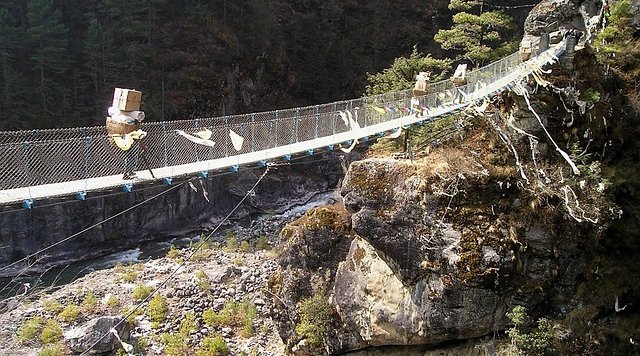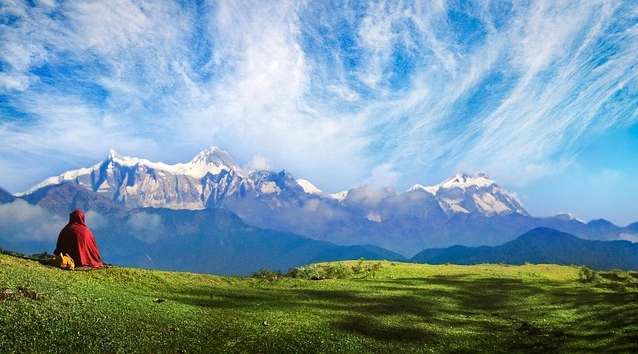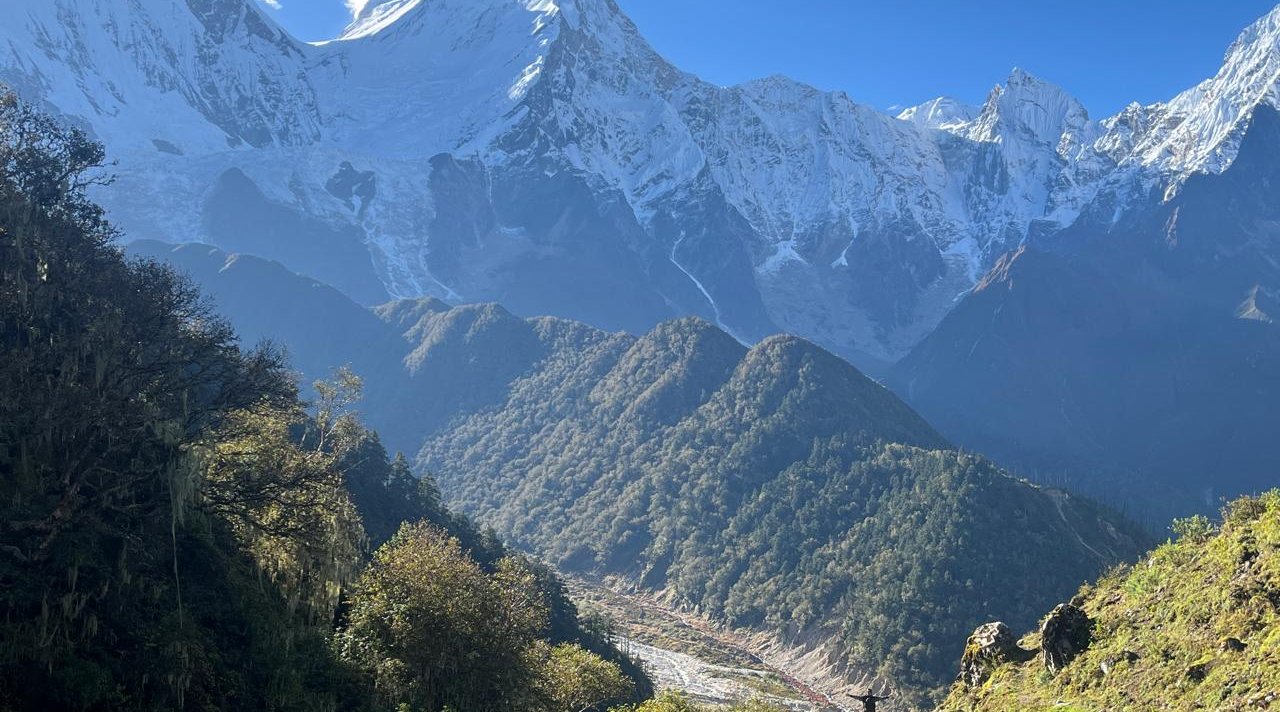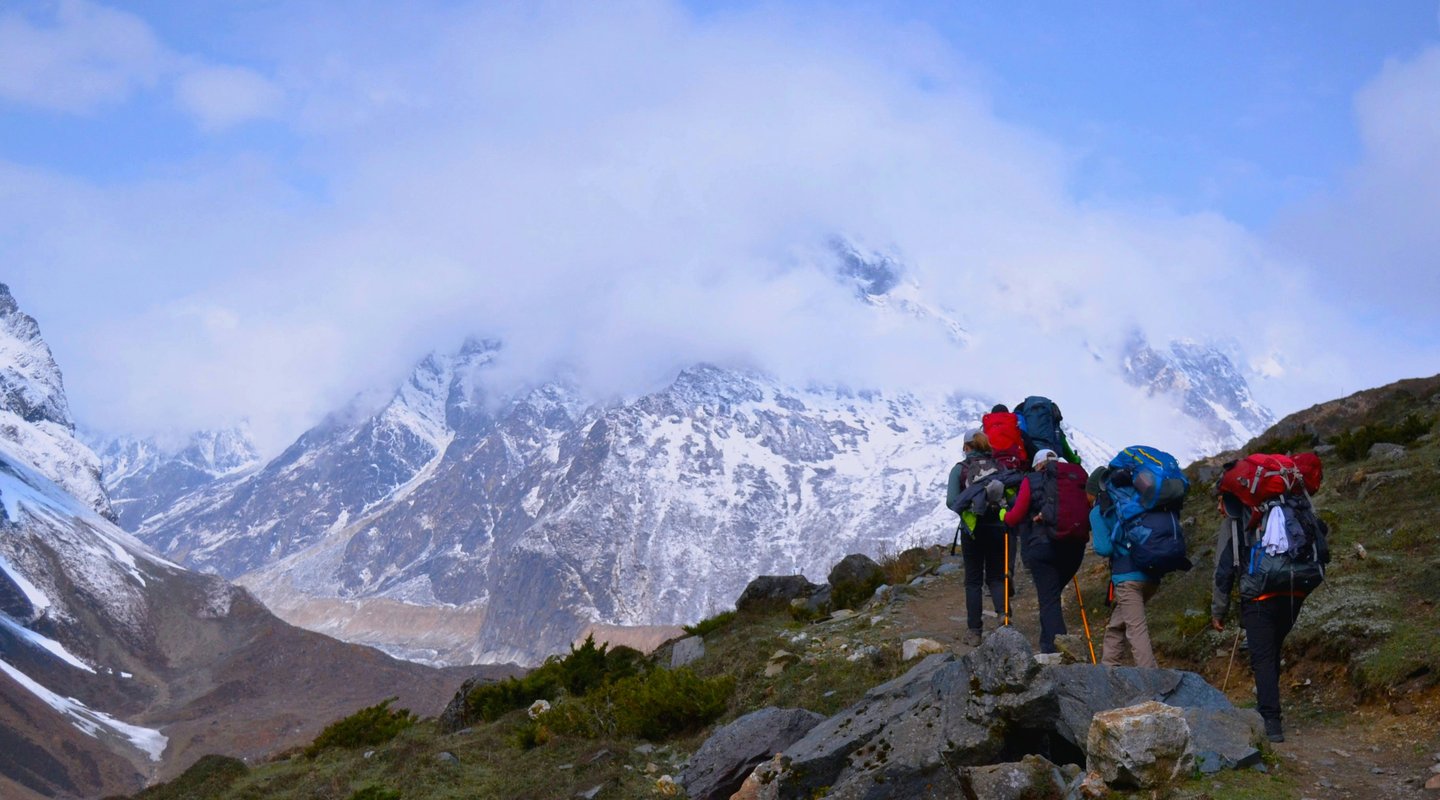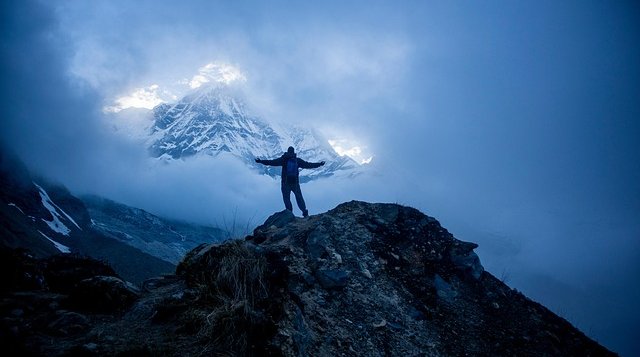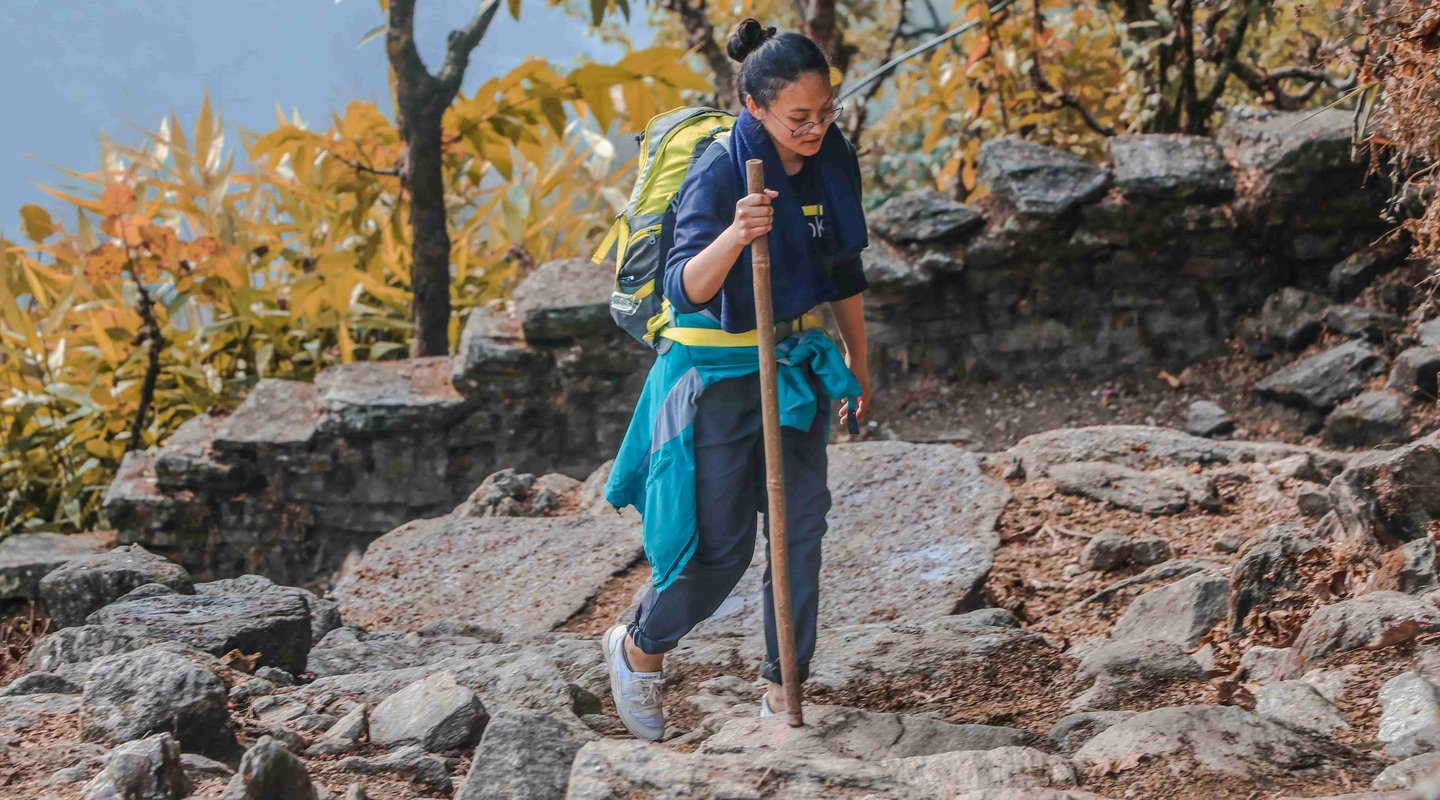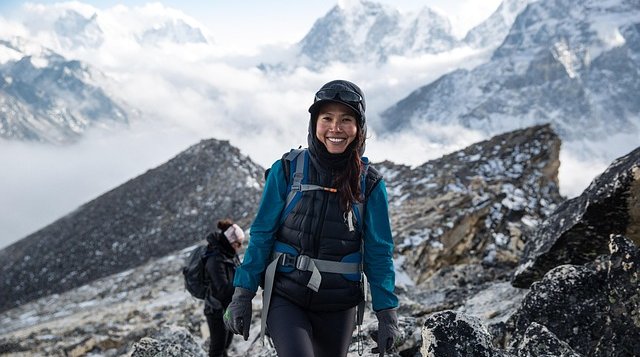Picture this: You're standing at 5,357 meters. The sunrise paints Mount Everest gold. Turquoise glacial lakes surround you.
Only a handful of other trekkers share this moment.
This isn't Everest Base Camp, where 40,000+ annual visitors crowd the trails. This is Gokyo Ri—one of seven spectacular alternatives to Everest Base Camp that deliver equally stunning experiences with far fewer crowds.
Are you questioning whether the increasingly crowded EBC route is right for you? You're not alone.
In 2024, over 2,000 trekkers per day attempted the classic route during peak season. The once-remote mountain adventure has become what many call "a high-altitude highway."
Here's the good news:
Nepal offers world-class EBC alternatives that deliver everything you're seeking:
- Stunning Himalayan views
- Authentic cultural experiences
- Lower costs than EBC
- More flexibility with dates
- That true sense of adventure
Whether you're looking for easier alternatives to Everest Base Camp, shorter treks, or simply want to avoid crowds, this guide reveals the seven best options seasoned trekkers are choosing instead.
Why Consider Alternatives to Everest Base Camp?
The Crowd Reality: Numbers That Matter
The Everest Base Camp trek remains Nepal's most famous route. But its popularity has fundamentally changed the experience.
Peak Season Traffic (March-May, September-November):
- 40,000+ trekkers annually on narrow trails
- 2,000+ people daily between Namche and Base Camp
- 150+ Lukla flights attempting to land each day
- Teahouses regularly overbooked
- Late arrivals often sleep in dining rooms
Compare These Alternatives:
- Manaslu Circuit trek: Only 15,000 annual visitors
- Gokyo Lakes: Just 5,000-7,000 trekkers yearly
- Three Passes: Fewer than 3,000 attempts annually
These less crowded treks than Everest offer the solitude and nature connection many seek in the Himalayas.
The View Surprise Most Blogs Won't Tell You
Here's a shocking fact: Everest Base Camp itself has no view of Mount Everest.
The famous summit views come from Kala Patthar—a separate, challenging climb.
Meanwhile:
- Gokyo Ri provides better Everest views than the classic EBC route
- You'll see four 8,000-meter peaks: Everest, Lhotse, Makalu, and Cho Oyu
- The turquoise lakes add a stunning foreground to photos
- Fewer people mean unobstructed viewpoints
Real Cost Differences That Add Up
EBC Hidden Costs:
- Lukla flights: $360-400 (mandatory)
- Premium teahouse prices due to demand
- Limited accommodation is driving prices up
- Total budget: Often $1,500-2,000+
Alternative Trek Savings:
- Langtang Valley: Starts with a $15 bus ride (no flight)
- Mardi Himal: 50% less than EBC total cost
- Annapurna region: More teahouse competition = lower prices
When comparing EBC vs Annapurna cost, you'll save $500-800 per person.
The 2023 Guide Rule That Changed Everything
As of April 2023, Nepal requires mandatory guides for all national park treks. This affects every route mentioned here.
What This Means:
- Additional $25-30 per day for guide services
- Increased safety and local employment
- Some treks (like Manaslu) already required guides
- The cost gap between EBC and alternatives has narrowed
Quick Comparison: Your 7 Best Options at a Glance
1. Annapurna Circuit
- Duration: 12-21 days
- Max Altitude: 5,416m (Thorong La Pass)
- Difficulty: Moderate to Hard
- Annual Visitors: 40,000+
- Budget: $900-1,400
- Best For: Classic circuit lovers
- Crowd Level: Medium
2. Annapurna Base Camp (ABC)
- Duration: 10-12 days
- Max Altitude: 4,130m
- Difficulty: Moderate
- Annual Visitors: 30,000+
- Budget: $700-1,100
- Best For: Shorter timeline trekkers
- Crowd Level: Medium-High
3. Manaslu Circuit
- Duration: 15-18 days
- Max Altitude: 5,106m (Larkya La Pass)
- Difficulty: Moderate to Hard
- Annual Visitors: 15,000
- Budget: $1,200-1,800
- Best For: Remote adventure seekers
- Crowd Level: Low-Medium
4. Gokyo Lakes
- Duration: 12-14 days
- Max Altitude: 5,357m (Gokyo Ri)
- Difficulty: Moderate
- Annual Visitors: 5,000-7,000
- Budget: $1,100-1,600
- Best For: Best Everest views
- Crowd Level: Low-Medium
5. Langtang Valley
- Duration: 7-10 days
- Max Altitude: 4,984m
- Difficulty: Moderate
- Annual Visitors: 10,000
- Budget: $600-900
- Best For: Budget-conscious trekkers
- Crowd Level: Low-Medium
6. Mardi Himal
- Duration: 4-7 days
- Max Altitude: 4,500m
- Difficulty: Easy to Moderate
- Annual Visitors: 5,000
- Budget: $400-700
- Best For: Beginners and short trips
- Crowd Level: Low
7. Three Passes
- Duration: 17-21 days
- Max Altitude: 5,535m (Kongma La)
- Difficulty: Hard
- Annual Visitors: 3,000
- Budget: $1,500-2,200
- Best For: Ultimate challenge seekers
- Crowd Level: Very Low
The 7 Best Everest Base Camp Trek Alternatives
1. Annapurna Circuit Trek – The World's Most Celebrated Circuit
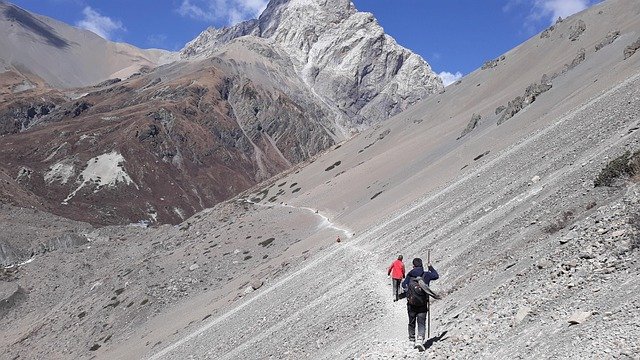
TheAnnapurna Circuit trek consistently ranks as the world's best long-distance trek. Here's why it tops our list of best alternative treks to Everest Base Camp.
Trek Highlights:
- Circumnavigates the entire Annapurna Massif
- Crosses Thorong La Pass at 5,416m
- Takes 12-21 days (shorter options available)
- Moderate to challenging difficulty
- 40,000+ annual visitors (similar to EBC but spread over larger area)
What You'll Experience:
- Subtropical forests to high-altitude deserts
- Hindu villages transitioning to Tibetan Buddhist communities
- Views of three 8,000m peaks (Annapurna I, Dhaulagiri, Manaslu)
- The world's deepest gorge (Kali Gandaki)
- Traditional Gurung and Thakali villages
- Perfect acclimatization with clockwise route
Why Choose Over EBC:
- More diverse landscapes and cultures
- No expensive flights required
- Better infrastructure with more teahouse options
- Can trek year-round (different sections)
Reality Check: Road construction affects 70% of the traditional route. But don't worry—alternative trails and the NATT (New Annapurna Trekking Trail) preserve the walking experience.
Best Months: March-May, October-November Budget Range: $900-1,400 all-inclusive
2. Annapurna Base Camp (ABC) – The Sanctuary Trek
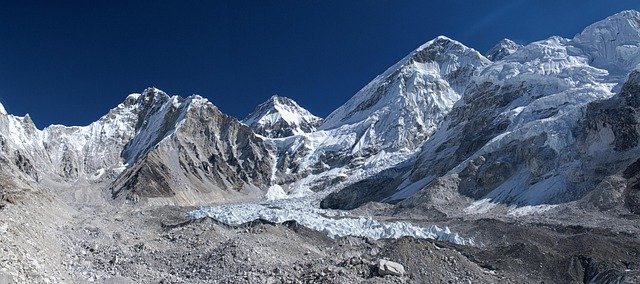
When comparing Annapurna Base Camp vs Everest Base Camp, ABC wins on accessibility and mountain amphitheater views.
Trek Essentials:
- 10-12 days duration
- Reaches 4,130m (lower altitude = less risk)
- Moderate difficulty
- 30,000+ annual trekkers
- Natural amphitheater setting
Why ABC Beats EBC:
- Shorter timeline (saves 4-6 days)
- Lower altitude (reduced sickness risk)
- No flight required (drive from Pokhara)
- 360-degree mountain views at base camp
- More diverse cultures (Gurung and Magar villages)
- Warmer temperatures at lower elevations
The ABC Experience:
- Trek through terraced farmlands
- Pass bamboo and rhododendron forests
- Enter the Annapurna Sanctuary
- Wake to sunrise on Annapurna I (8,091m)
- See the famous Machhapuchhre (Fishtail Peak)
- Experience varied ethnic communities
This easier alternative to Everest Base Camp perfect for those with altitude concerns or time constraints.
Best Months: March-May, September-November Budget Range: $700-1,100 complete package
3. Manaslu Circuit Trek – The Hidden Gem

Professional trekkers consistently nameManaslu Circuit as the single best alternative trek to EBC.
Here's what makes it special:
Key Facts:
- 15-18 days of trekking
- Crosses Larkya La Pass (5,106m)
- Only 15,000 annual visitors
- Restricted area (special permit required)
- Mandatory guide even before 2023 rules
- Moderate to challenging difficulty
Why Manaslu Wins:
- Authentic wilderness (roads haven't reached here)
- One-third the crowds of EBC
- Traditional Tibetan Buddhist villages unchanged by tourism
- Incredible diversity from 700m to 5,106m
- Circuit route (no backtracking)
- Similar challenge to EBC but more rewarding
What Makes It Unique:
- Restricted area preserves authenticity
- Special permits cost $75-100
- Maximum group size limitations
- Fewer than 50 trekkers daily in peak season
- Traditional stone villages
- Ancient monasteries and mani walls
The Manaslu Experience:
- Start in subtropical Sal forests
- Follow the Budhi Gandaki gorge
- Pass through pure Tibetan villages
- Cross dramatic suspension bridges
- Summit Larkya La Pass at sunrise
- Circle the world's 8th highest peak (8,163m)
Best Months: March-May, September-November Budget Range: $1,200-1,800 including permits
4. Gokyo Lakes Trek – Better Everest Views, Fewer Crowds
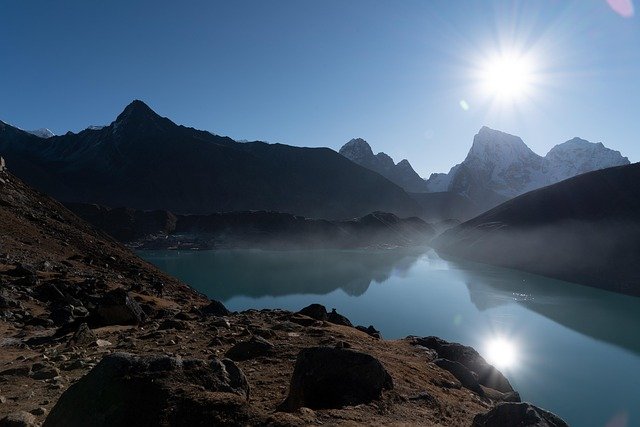
Here's the insider secret: Gokyo Lakes trek offers superior Everest views compared to EBC itself.
Why Gokyo Beats EBC:
- Better mountain views from Gokyo Ri
- Only 5,000-7,000 annual visitors (vs 40,000+ on EBC)
- Six turquoise glacial lakes (unique feature)
- Same Everest region, different valley
- Avoids 70% of EBC crowds
- Higher viewpoint than Kala Patthar
Trek Details:
- 12-14 days duration
- Reaches 5,357m (Gokyo Ri summit)
- Moderate difficulty
- Stays in Everest region
- Sherpa culture and villages
- Buddhist monasteries en route
What You'll See from Gokyo Ri:
- Four 8,000m peaks in one panorama
- Mount Everest (8,849m)
- Lhotse (8,516m)
- Makalu (8,485m)
- Cho Oyu (8,188m)
- Countless 6,000-7,000m peaks
- The massive Ngozumpa Glacier
Unique Features:
- World's highest freshwater lake system
- Sacred lakes with religious significance
- Less commercialized than EBC
- Quieter trails and teahouses
- Optional crossing to EBC via Cho La Pass
This alternative to Everest Base Camp in the Everest region delivers better views with fewer crowds.
Best Months: March-May, September-November Budget Range: $1,100-1,600 complete
5. Langtang Valley Trek – The Accessible Adventure
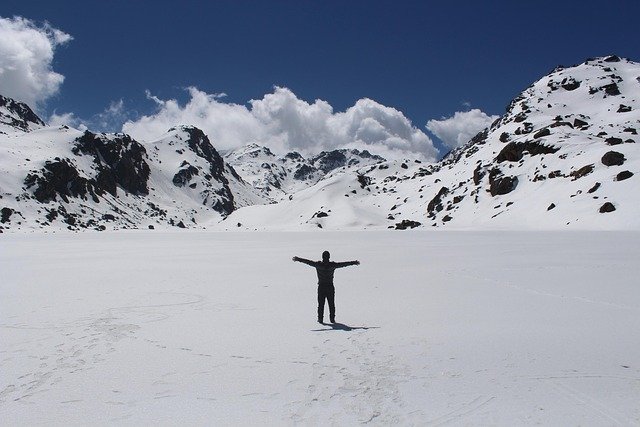
The Langtang Valley trek stands out as the most accessible major trek from Kathmandu—no flights needed.
Why Choose Langtang:
- 7-10 days only (perfect for shorter trips)
- Drive access from Kathmandu (7-8 hours)
- Save $400+ on flight costs
- 10,000 annual visitors (genuinely quiet)
- 4,984m maximum (Kyanjin Ri)
- Earthquake recovery supports communities
Trek Highlights:
- Third most popular region in Nepal
- "Valley of Glaciers" nickname
- Tamang and Tibetan cultures
- Red panda habitat
- Yak cheese factories
- Sacred lakes option (Gosaikunda)
The Langtang Experience:
- Start with scenic mountain drive
- Trek through oak and rhododendron forests
- Spot wildlife (red pandas, Himalayan bears)
- Visit ancient Kyanjin Gompa monastery
- Climb Kyanjin Ri for panoramic views
- See Langtang Lirung (7,234m) up close
Perfect For:
- Budget trekkers (cheapest major trek)
- Time-limited travelers (one week needed)
- Altitude-sensitive hikers (lower elevations)
- Cultural enthusiasts (Tamang heritage)
This budget alternative to Everest Base Camp proves you don't need to break the bank for Himalayan magic.
Best Months: March-May, September-November Budget Range: $600-900 all-inclusive
6. Mardi Himal Trek – The Beginner's Dream
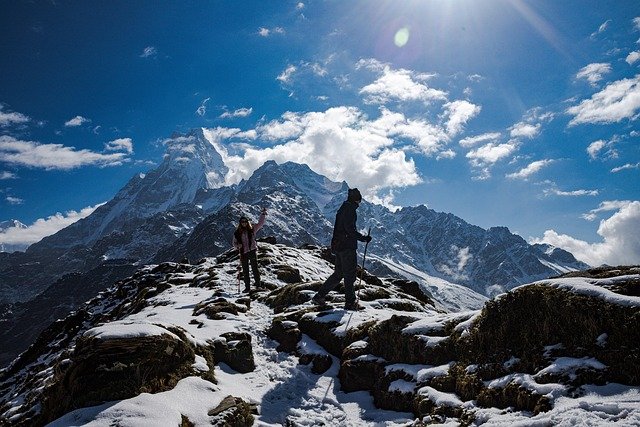
Opened in 2012,Mardi Himal trek remains Nepal's best-kept secret and perfect beginner-friendly alternative to EBC.
Why It's Perfect for First-Timers:
- 4-7 days only (shortest option)
- 4,500m maximum (lower altitude)
- Easy to moderate difficulty
- Only 5,000 annual trekkers
- Close to Pokhara (easy access)
- Ridge walking (unique experience)
What Makes Mardi Special:
- Intimate mountain experiences
- Fairy-tale rhododendron forests
- Close-up Machhapuchhre views
- Only 10-20 trekkers daily
- Temporary shepherd settlements
- Dramatic ridge approach to base camp
The Mardi Experience:
- Start from Pokhara (1 hour drive)
- Walk through magical forests
- Emerge above tree line
- Follow spectacular ridge trail
- Reach base camp viewpoint
- See Annapurna South, Hiunchuli, Machhapuchhre
Perfect For:
- Complete beginners to high-altitude trekking
- Short vacation trekkers
- Photographers (dramatic ridge shots)
- Nature lovers (pristine forests)
This easier alternative to Everest Base Camp delivers big rewards with minimal time investment.
Best Months: March-May, September-November Budget Range: $400-700 complete package
7. Three Passes Trek – The Ultimate Everest Challenge
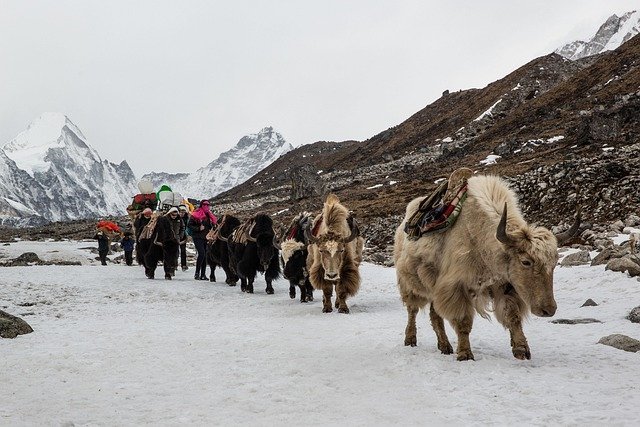
For those seeking a harder alternative to Everest Base Camp, the Three Passes Trek represents Nepal's ultimate trekking challenge.
What Makes It Ultimate:
- 17-21 days of challenging trekking
- Three high passes above 5,300m
- Includes EBC plus much more
- Only 3,000 annual attempts
- Combines three treks in one
- Most complete Everest region experience
The Three Passes:
- Kongma La Pass (5,535m) - highest
- Cho La Pass (5,420m) - most technical
- Renjo La Pass (5,360m) - best views
Why Choose Three Passes:
- Visit both EBC and Gokyo Lakes
- No backtracking (complete circuit)
- Multiple viewpoints and summits
- Experience entire Khumbu region
- Genuine solitude on passes
- Ultimate bragging rights
Requirements:
- Excellent physical fitness
- Previous trekking experience
- Mental fortitude for challenges
- Proper acclimatization schedule
- Quality gear and equipment
- Experienced guide essential
This is the connoisseur's choice—the most challenging trek in Nepal accessible to non-climbers.
Best Months: March-May, September-November only Budget Range: $1,500-2,200 all-inclusive
How to Choose Your Perfect Alternative Trek
Making the right choice depends on your priorities. Here's a simple decision framework:
If You're Short on Time (4-7 Days)
Choose: Mardi Himal or shortened Langtang Valley
- Mardi offers intimate mountain views
- Langtang provides easy access from Kathmandu
- Both deliver Himalayan magic in under a week
If You Want the Best Everest Views
Choose: Gokyo Lakes
- Better Everest panorama than EBC itself
- Turquoise lakes as bonus
- Same region, fewer crowds
- Option to combine with EBC
If You're Seeking Remote Adventure
Choose: Manaslu Circuit
- Most authentic wilderness experience
- Traditional villages unchanged by tourism
- Restricted area preserves culture
- Similar challenge to EBC
If It's Your First Nepal Trek
Choose: Annapurna Base Camp or Mardi Himal
- ABC offers classic experience at lower altitude
- Mardi perfect for testing high-altitude tolerance
- Both have excellent infrastructure
- Lower risk of altitude sickness
If You Love Classic Long-Distance Trekking
Choose: Annapurna Circuit
- World's premier circuit trek
- Incredible landscape diversity
- Cultural immersion opportunities
- Thorong La Pass achievement
If You Want the Ultimate Challenge
Choose: Three Passes Trek
- Most difficult non-climbing trek
- Includes EBC plus much more
- True wilderness experience
- Maximum bragging rights
If You're Budget Conscious
Choose: Langtang Valley
- No flight costs (saves $400+)
- Shorter duration reduces daily costs
- Closer to Kathmandu
- Lower permit fees
Essential Planning Information
When to Go: Seasonal Considerations
Spring Season (March-May):
- Clearest mountain views
- Rhododendrons in full bloom
- Warmer temperatures
- More stable weather
- Higher prices and more crowds
Autumn Season (September-November):
- Crystal clear skies post-monsoon
- Perfect temperatures
- Festival season in villages
- Peak trekking period
- Book accommodations early
Winter Season (December-February):
- Fewer trekkers everywhere
- Cold but clear days
- Lower altitude treks better
- Some high passes may close
- Best deals on guides and lodges
Monsoon Season (June-August):
- Rain in most regions
- Exception: Upper Mustang and Manaslu (rain shadow)
- Lush green landscapes
- Fewer crowds
- Leeches in lower elevations
The 2023 Guide Requirements Explained
What Changed:
- Mandatory guides for all national park treks
- Solo trekking no longer permitted
- Applies to all treks mentioned here
Cost Impact:
- Additional $25-30 per day for guide
- Tips expected (10-15% of total)
- Guide's food and accommodation usually included
Benefits:
- Increased safety
- Local employment support
- Cultural insights
- Help with permits and logistics
- Emergency assistance available
Permit Requirements by Trek
Annapurna Region (Circuit & ABC):
- ACAP Permit: $30
- TIMS Card: $20
- No special restrictions
Manaslu Circuit:
- Restricted Area Permit: $75-100 (varies by season)
- ACAP Permit: $30
- MCAP Permit: $30
- Mandatory registered guide
Everest Region (Gokyo, Three Passes):
- Sagarmatha National Park: $30
- Khumbu Municipality Permit: $20
- TIMS Card: $20
Langtang Valley:
- Langtang National Park: $30
- TIMS Card: $20
Mardi Himal:
- ACAP Permit: $30
- TIMS Card: $20
Budget Breakdown: What to Expect
Daily Costs Include:
- Accommodation: $5-10 per night
- Meals: $15-25 per day
- Guide: $25-30 per day
- Porter (optional): $20-25 per day
- Permits: One-time fees
- Transportation: Varies by trek
Money-Saving Tips:
- Book directly with local companies
- Travel in shoulder seasons
- Share guide/porter costs with others
- Bring some snacks from Kathmandu
- Avoid alcohol at altitude (expensive and dangerous)
Fitness Requirements: Honest Assessment
Easy to Moderate (Mardi Himal, shorter Langtang):
- Walk 4-6 hours daily
- Carry 5-7kg daypack
- Previous hiking helpful but not essential
- Basic cardio fitness sufficient
Moderate (ABC, Langtang, Gokyo):
- Walk 5-7 hours daily
- Handle consecutive trekking days
- Climb 800-1000m elevation in a day
- 3 months training recommended
Moderate to Hard (Annapurna Circuit, Manaslu):
- Walk 6-8 hours daily
- Cross high passes
- Handle altitude above 5,000m
- 4-6 months training ideal
Challenging (Three Passes):
- Walk 7-9 hours daily
- Technical pass crossings
- Excellent fitness required
- Previous high-altitude experience essential
- 6+ months serious training
Frequently Asked Questions
Which alternative is easier than Everest Base Camp?
Mardi Himal and Annapurna Base Camp are both easier than EBC.
Mardi Himal:
- Reaches only 4,500m (vs EBC's 5,364m)
- Takes 4-7 days (vs 12-14 days)
- Less strenuous daily walks
ABC:
- Stops at 4,130m altitude
- Better acclimatization profile
- Warmer temperatures throughout
Can beginners do these alternative treks?
Yes, with proper preparation. Best beginner options:
Mardi Himal:
- Shortest duration
- Lower altitude
- Excellent first trek
Shortened Langtang Valley:
- Flexible itinerary
- Easy escape routes
- Close to Kathmandu
Lower Annapurna Region:
- Poon Hill (3-4 days)
- Ghorepani circuit
- Australian Camp
Which trek has the best mountain views besides Everest Base Camp?
Gokyo Lakes offers the best mountain views:
- Four 8,000m peaks visible
- Better Everest view than EBC
- 360-degree panorama from Gokyo Ri
- Turquoise lakes in foreground
Runner-ups:
- Three Passes (most viewpoints)
- Annapurna Circuit (most diverse views)
- ABC (best amphitheater setting)
Do I really need a guide after the 2023 regulations?
Yes, guides are now mandatory for all national park treks in Nepal.
No exceptions for:
- Solo trekkers
- Experienced hikers
- Return visitors
Guide benefits beyond legal requirement:
- Route finding in bad weather
- Accommodation booking assistance
- Cultural translation
- Emergency support
- Local knowledge
What's the cheapest alternative to Everest Base Camp?
Langtang Valley is the most budget-friendly:
- No flight costs (bus from Kathmandu)
- Shorter duration (7-10 days)
- Lower daily costs
- Total budget: $600-900
Other budget options:
- Mardi Himal ($400-700)
- Lower Annapurna treks ($300-500)
- Shortened versions of longer treks
How do I choose between the Annapurna Circuit and ABC?
Choose Annapurna Circuit if you:
- Have 2+ weeks available
- Want a complete journey
- Enjoy varied landscapes
- Like long-distance trekking
Choose ABC if you:
- Have 10-12 days maximum
- Prefer out-and-back routes
- Want lower maximum altitude
- Seek dramatic mountain amphitheater
Is the Manaslu Circuit harder than the Everest Base Camp?
They're similarly challenging with key differences:
Manaslu Circuit:
- Slightly lower max altitude (5,106m vs 5,364m)
- Longer duration (15-18 vs 12-14 days)
- More remote (less infrastructure)
- Larkya La Pass is one long day
Everest Base Camp:
- Higher altitude effects
- Better infrastructure
- More crowded trails
- Multiple acclimatization days
Overall difficulty: Similar, with Manaslu being more remote but slightly lower.
Final Thoughts: Your Perfect Trek Awaits
Everest Base Camp isn't the only world-class trek in Nepal. In fact, it might not even be the best choice for your personal adventure.
Each alternative offers unique advantages:
- Better views (Gokyo Lakes)
- More culture (Annapurna Circuit)
- True wilderness (Manaslu)
- Shorter duration (Mardi Himal)
- Lower cost (Langtang)
- Greater challenge (Three Passes)
The best alternative to Everest Base Camp is the one that matches your priorities, fitness, time, and budget.
Consider what matters most:
- Avoiding crowds?
- Saving money?
- Shorter duration?
- Better views?
- Cultural immersion?
- Physical challenge?
Whatever you choose, you'll experience the magic of the Himalayas. These mountains have a way of exceeding expectations, regardless of which trail you take.
The only mistake is not going at all.
Ready to choose your adventure? Start training now. The mountains are waiting.
About Himalayan Hero: We're a Nepal-based trekking company specializing in less-crowded, authentic mountain experiences. Our local guides know these alternative routes intimately and can help you choose the perfect trek for your dreams and abilities.
Contact us today to plan your alternative to Everest Base Camp. Let's find your perfect mountain adventure—one with fewer crowds and more magic.
Contact our expert team to customize your trek:

